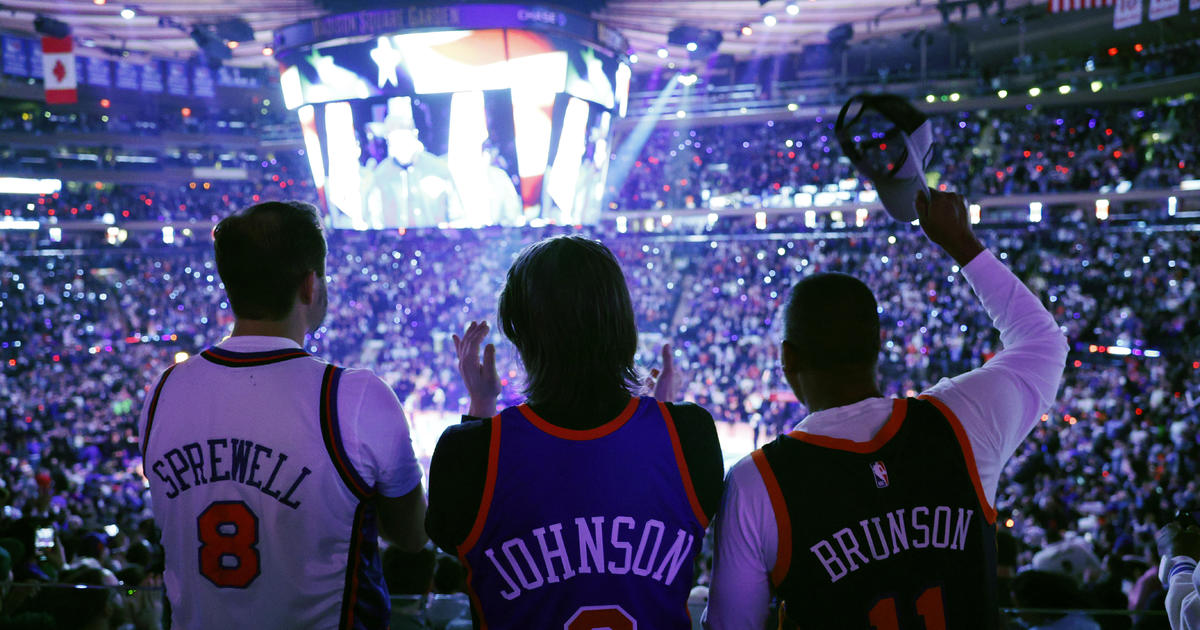NYCFC On The Radio: A New Team Means New Terms
By Dov Kramer
Are you ready for the debut of MLS soccer on The FAN? For soccer fans, the advent of a new team, playing in Yankee Stadium, is very exciting. For the uninitiated, though, listening to a sport they are unfamiliar with can make it difficult to follow the action. We therefore present a basic primer of the terms and expressions you may hear Tom Kolker and Glenn Crooks use as they call the game (also called a match) on WFAN.
The Box: No, it's not a defensive alignment. It's the area in front of the goal, with demarcation lines that form a rectangle. It's also called the "penalty box," because a penalty committed by a defensive player within "the box" will usually result in a penalty kick. It is also sometimes referred to as "the 18," since it is 18 yards deep. Speaking of defensive formations, though, you might hear Tom and Glenn talk about a team playing a "4-4-2," as in four defenders (playing close to the goal they are defending), four midfielders and two forwards, or a "4-2-3-1," with two layers of midfielders.
Back Four: This term does not refer to the last four holes of a golf course when playing only nine. Nor does it refer to how long it will be until we come back from the commercial break (especially since there are no commercial breaks during the actual game; now you know why soccer matches have rarely been broadcast on TV or the radio – until now, that is!). Since most defensive alignments ("formations") include four players along the back line (right in front of "the box"), they are referred to as "the back four."
The Byline: Yes, this is my first byline for WFAN.com, but in soccer "the byline" refers to the lines at either end of "the pitch" (i.e. the field, see below) that designate the boundary at the end of the field of play.
Corner Kick: Just what it sounds like; a free kick from an offensive corner. A corner kick, like every "free kick," is very dangerous because it gives the offense a good chance to score if they can put the ball right in front of the goal. Often, a "free kick" is defended against by setting up a "wall" of players who try to prevent the free kick from easily reaching an offensive player in "the box."
Dribbling: Although on the radio it often refers to an aging and perhaps drooling host, during a soccer broadcast it is more similar to the way the term is used in basketball, with a player moving the ball across "the pitch" by kicking it to a place where (he hopes) only he can reach it.
The Penalty Box: Soccer and hockey share many things in common, primarily the object of the game being to get the ball or puck into the opposing team's goal. However, whereas in hockey the term "penalty box" refers to a sort of detention room (not that I would know what one looks like), where a penalized player must stay until his penalty time is up, in soccer it is the area in front of the goal (see "the box") because a penalty committed by a defensive player in that area will likely result in a penalty kick.
The Pitch: Even though the goalkeeper can throw the ball to one of his teammates (he's the only player on the field who can use his hands), "the pitch" is just another name for the field of play.
Red Card: A player receiving a red card does not get an extra 5 percent off his purchase anywhere. It means he was ejected from the game. And his team must play the rest of the match with one less player on "the pitch."
The Six Box: Although beer is sold at the arena during a soccer match, it does not come in a box, nor is it sold with six in a package. Rather, the goal area (the area between the goal posts and behind the goal line) is sometimes referred to as "the 6 box" because it is six yards deep.
Stoppage Time: In soccer, even when play is stopped, the clock isn't. (Kind of like real life, where time keeps on ticking, ticking, ticking, even if something unexpected comes up that makes us stop what we're doing, forcing us to get back to it later.) Instead, the referee keeps track of how much time elapsed during each play stoppage, and adds it on to the end of each half. Is it a bit disconcerting that no one (besides the referee) knows for sure how much time is actually left? Sure. Does it run counter to our being accustomed to full transparency? Absolutely. But at least now you know what "stoppage time" means!
The Touchline: Without getting into which sport is the "real" football, "the touchline" refers to the same thing as "the sideline" in the sport played with a brown ball that is not round and is sometimes kicked, but usually carried or thrown. The lines on the side of the field -- um, I mean "the pitch" -- delineate where the field of play ends.
Yellow Card: Not a permission slip to take a bathroom break. If a referee gives a player a yellow card, it's a warning that he broke one of the rules and he better not do it again. Because if he does (and receives a second "yellow card"), he will be ejected from the game, and his team will have to play shorthanded for the rest of the match.
Soccer can be a very exciting game, but it's hard to enjoy it without knowing what the announcers are talking about. Hopefully this list will help.
Dov Kramer is the executive producer of the radio broadcasts of New York City FC matches on WFAN.



